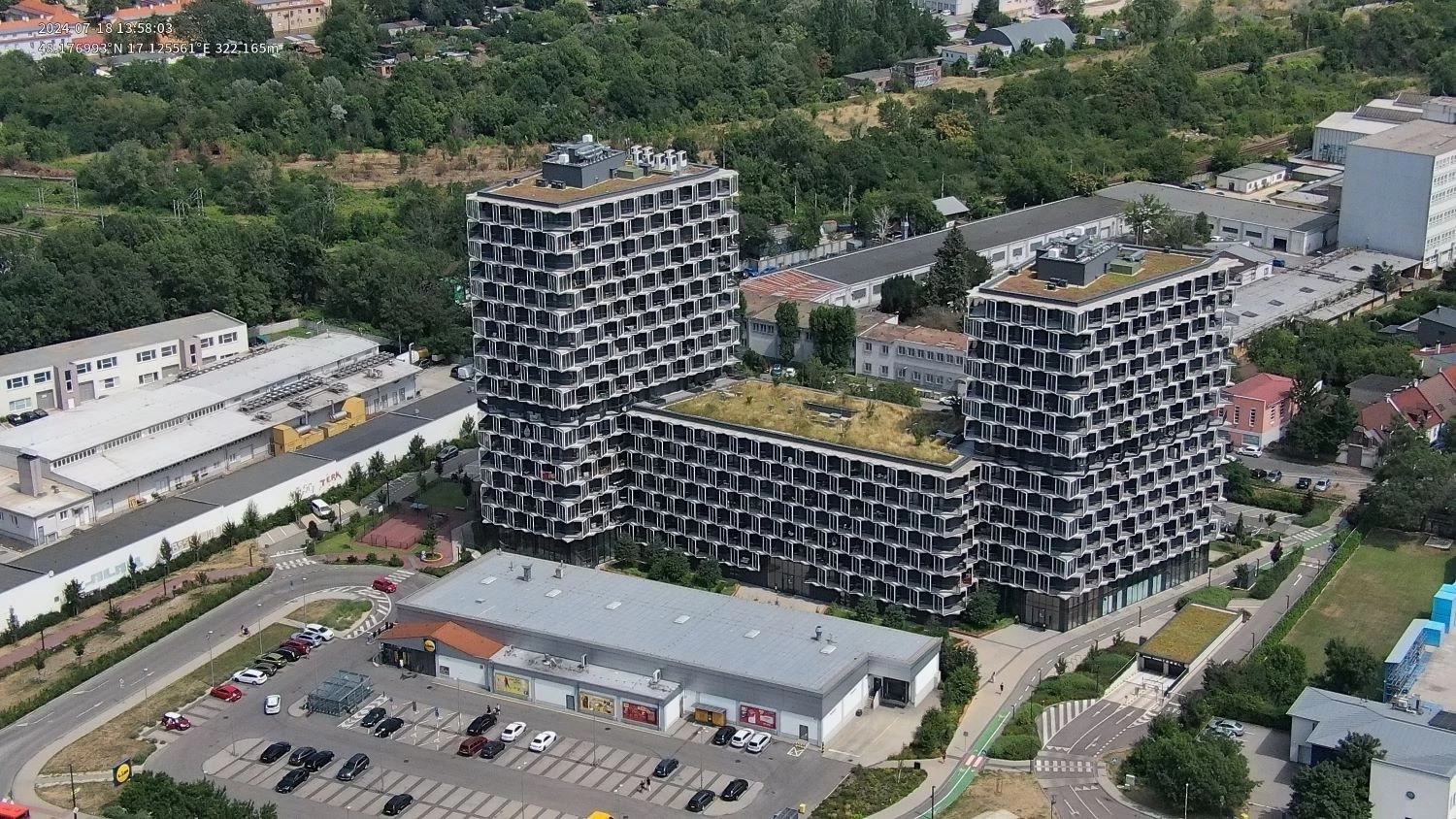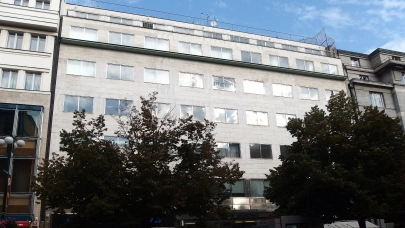
The surface of an asphalt parking lot has heated up to an average temperature of almost 52°C during a hot summer day. The green area with vegetation in its immediate vicinity has been at the same time up to 22°C cooler. The Slovak developer Corwin has brought this data resulting from a thermal imaging inspection by Terradron.
In addition to the surroundings of the Guthaus residential complex in Bratislava, the measurement also focused on its vegetated roofs. This location was also "measured" under the same conditions - a sunny, windless day with a temperature of 32 to 34°C - in 2023. The current results confirmed that a simple equation applies to prevent overheating of the surroundings - the higher the greenery, the more effectively it fights the heat of summer days.
The north tower of the Guthaus has a vegetated roof with low plants. Between 13:50 and 14:00 on July 18, 2024, it had an average surface temperature of 49.5°C. Where the soil substrate was without vegetation, the temperature reached up to 62°C. On the contrary, in places covered with plants were heated to 38.9°C. The green roof of the connecting base covered with bushes and small trees averaged only 37.5°C.
Just like last year, Terradron also focused on the neighbouring shopping centre of which the roof is covered with foil insulation. Its average temperature during the measured time was 65.2°C. This is 10 to 15 degrees more than the South and North Towers of Guthaus, and even up to almost 28 degrees more compared to the roof of the central part of the complex with higher vegetation.
"With proper care, vegetated roofs have a huge impact and importance in trying to mitigate the effects of climate warming of densely built-up areas. Both traditional roofs and reinforced asphalt surfaces radiate heat to their surroundings. Fewer parking lots, more high-quality and appropriately chosen greenery, or effective and systematic support for the construction of vegetated roofs can significantly reduce temperatures in cities during the heat," points out Miriam Cánik, Expert on green infrastructure at CORWIN.
Already in 2019, Corwin had a special thermal imaging drone measure the temperatures of the roofs on its Blumental project located closer to the city centre, as well as in the areas surrounding this mixed-use building. The measurement was carried out during a summer day with a temperature of about 33°C. It showed how important the colour of the surfaces is. While the red-painted area near the playground was heated up to 64°C, the grey sidewalks in its neighbourhood were 11°C less hot. The temperature of the dark cardboard roof even exceeded 71°C, at the same time the vegetation roofs of Blumenthal were 24.4 degrees Celsius cooler.
Vegetation roofs can retain rainwater and by gradual evaporation, they cool not only the building but its immediate surroundings. Last but not least, with their ability to absorb heavy downpours, they help prevent street flooding. Together with its rain gardens, the Guthaus project was also able to cope with situations where more than 400,000 litres of water fell on its roofs and surrounding land within 24 hours.




